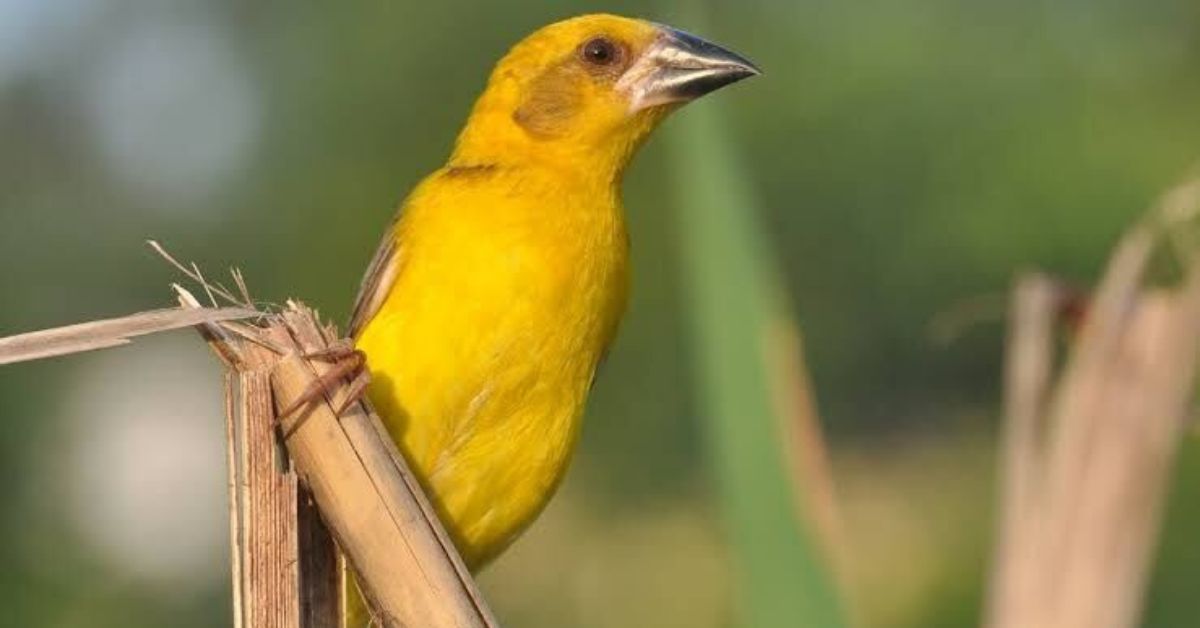Table of Contents
(Featured image courtesy Northeast News)
“Tukura sorai dekha?”
“Have you seen Tukura sorai?”
Advertisement
Ask around Assam, and birdwatchers might just light up. That’s the Finn’s Weaver, a brilliant yellow weaver bird whose presence signals something remarkable: healthy, thriving grasslands.
And that’s exactly what researchers found in Kaziranga National Park and Tiger Reserve (KNPTR) during the first-ever grassland bird census that talks about the hidden world of rare and endangered birds quietly thriving in the shadows of tall elephant grass.
43 Grassland bird species and counting
Between 18 March 2025 and 25 May 2025, wildlife researchers surveyed 185 grassland sites across Kaziranga, a UNESCO World Heritage Site. The result?
- 43 species of grassland birds
- One critically endangered, two endangered, six vulnerable, and one near-threatened species were recorded
- A breeding colony of Finn’s Weaver, one of India’s most elusive endangered birds
“This puts Kaziranga among the protected areas with the highest diversity of grassland birds in India,” said Sonali Ghosh, Director of KNPTR, in a statement to Deccan Herald.
What makes grassland birds so special?
Grassland birds are specialists. They thrive only in open, grassy ecosystems such as tall wet grasslands, scrub fields, and marshes. These birds are ecological indicators, and their presence shows that an ecosystem is balanced and undisturbed.
But that balance is fragile. Across India, natural grasslands are often seen as “wastelands” and converted to farms or infrastructure zones, leading to rapid habitat loss.
Advertisement
Spotlight on the Finn’s Weaver

One of the biggest wins from this census? The discovery of a breeding colony of the endangered Finn’s Weaver (Ploceus megarhynchus) — locally known as Tukura Sorai.
- This striking yellow weaver was first discovered over a century ago, but sightings have become rare and scattered.
- What makes it special? Unlike many birds, it breeds colonially, building elaborate nests high in trees above grasslands and wetlands.
- It’s considered a flagship species for grassland health, meaning that where it thrives, so do other species.
“This bird is a LIFER for many birdwatchers,” adds Ghosh in her statement to Deccan Herald. “It’s return to Kaziranga as a breeding population is a major conservation milestone.”
The top ten: Kaziranga’s grassland icons
The census emphasised ten rare and threatened species, all either globally endangered or endemic to the Brahmaputra floodplains:
- Bengal Florican (Critically Endangered)
- Swamp Francolin
- Finn’s Weaver
- Swamp Grass Babbler
- Jerdon’s Babbler
- Slender-billed Babbler
- Black-breasted Parrotbill
- Marsh Babbler
- Bristled Grassbird
- Indian Grassbird
Each of these birds relies on a specific grassland niche, from tall reed beds to open meadows, habitats that are vanishing elsewhere in India.
Conservation success is possible, for we’ve seen it before
Across India, targeted conservation has helped bring other species back from the edge:
- The Great Indian Bustard, once common, now critically endangered, is being revived in Rajasthan through dedicated breeding programs.
- Indian Vultures, almost wiped out by a common veterinary drug, are now recovering thanks to nationwide bans and vulture breeding centers.
- Lesser Florican, focused work in Gujarat and Madhya Pradesh is protecting their last remaining breeding sites.
These stories offer hope, and Kaziranga’s birds could be next.
Advertisement
More than just rhinos and tigers
Kaziranga is globally famous for its one-horned rhinoceroses, Royal Bengal tigers, Asian elephants, and swamp deer. But beyond these icons lies a quieter, feathered story of survival, return, and rich biodiversity in India’s overlooked grasslands.
So next time you’re in Kaziranga, look beyond the big five. Look to the grass and the skies.
You might just spot a Tukura Sorai, weaving its way into India’s conservation story.


